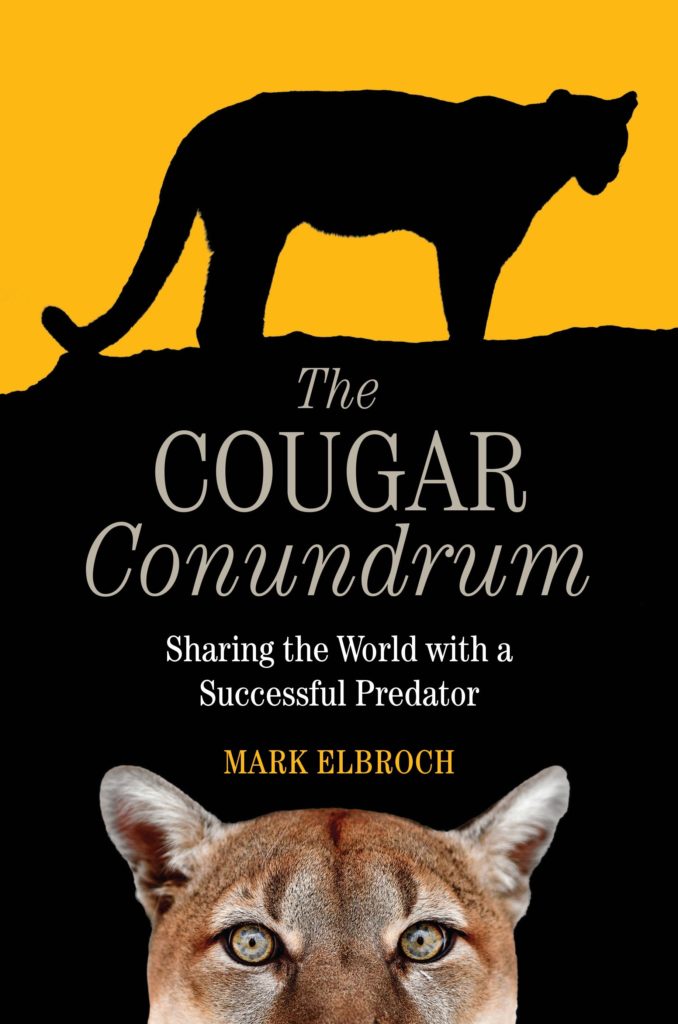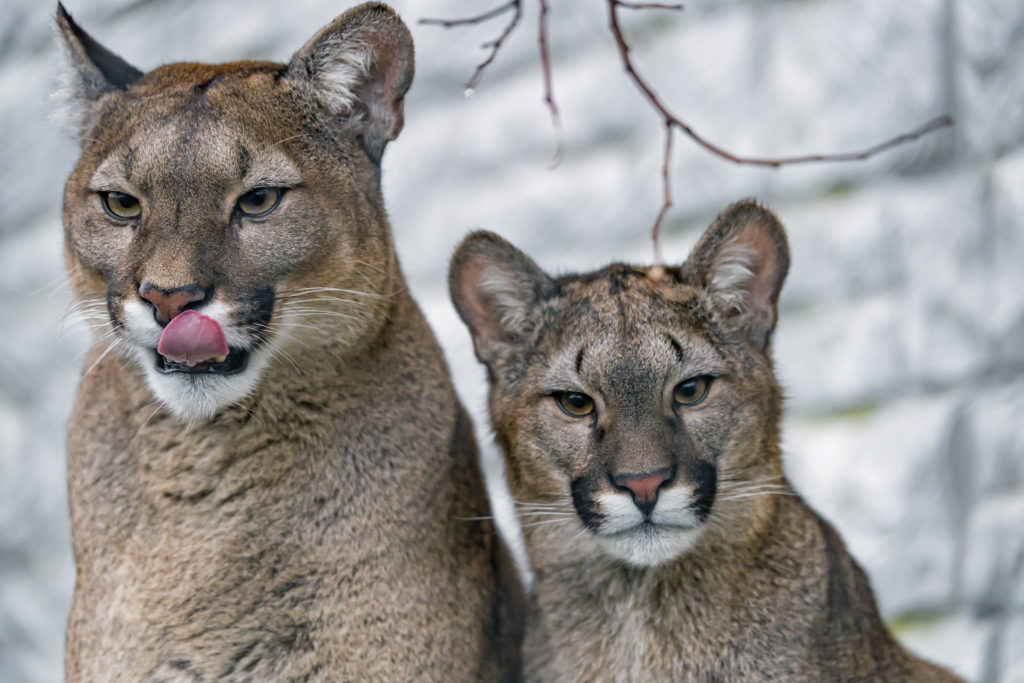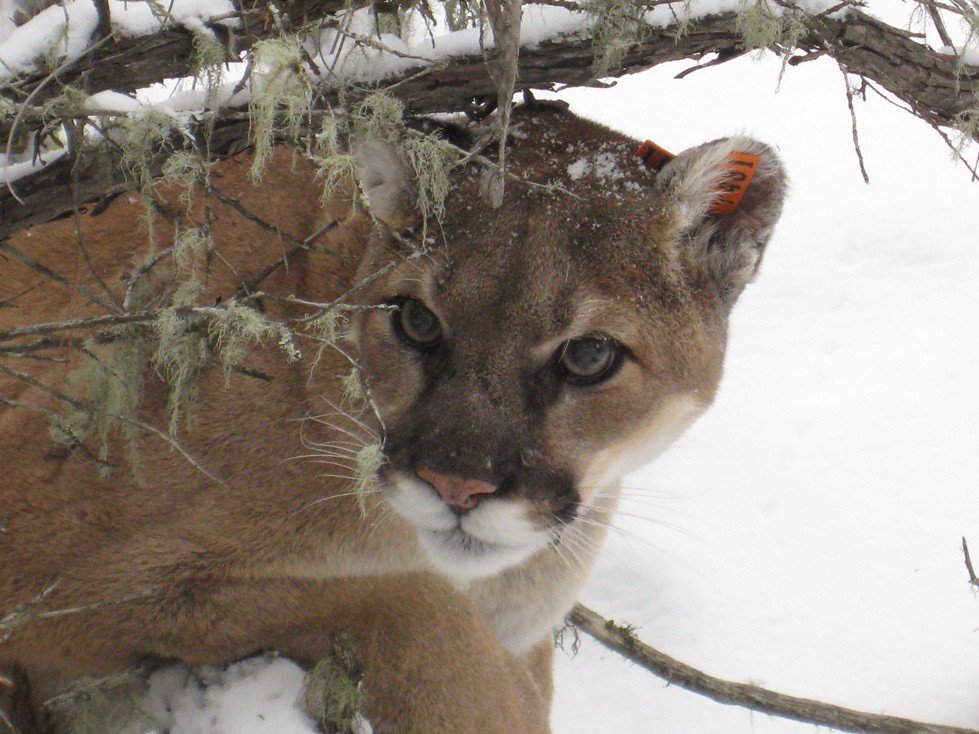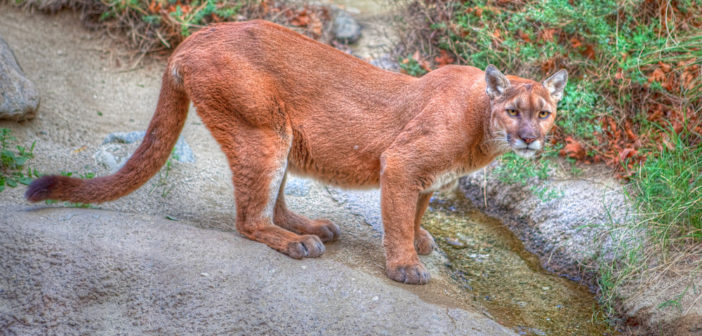
A good deal of fear and apprehension accompanies most reports of cougar sightings in the United States, which are increasingly common as populations continue to rebound from being hunted nearly to extinction. These enigmatic big cats are typically viewed as a threat, both to humans and farmed animals. But are they actually? And can we learn to live together in harmony with them?
Lead Scientist and Director of Panthera’s Puma Program Mark Elbroch explores these questions in his new book The Cougar Conundrum: Sharing the World with a Successful Predator. In an interview with Mark we discussed whether cougars deserve their reputation, what threats they face today, and what they’re really like, based on years of experience working with them.
Dylan Forest: What is your background, and what drew you to devote your career specifically to cougars?
Mark Elbroch: I’m a mountain lion biologist and Director of Panthera’s Puma (mountain lion) Program. Over the last 20 years, I’ve contributed to mountain lion research in Idaho, California, Colorado, Wyoming, Washington, Mexico and Chile. I’m also a father, a writer and someone who believes in the importance of natural history skills. In 2005, I earned a Senior Tracker Certificate in Kruger National Park, South Africa from CyberTracker Conservation, after successfully following lions across varied terrain.
Why mountain lions? Because it’s difficult, and difficult keeps me engaged. Because people love or hate mountain lions, and their passion means they will engage and that my work has the possibility of making a difference. Because it’s a wonderful time to be a mountain lion biologist. New technology is allowing us to answer questions we never could before—we are learning new things about the species every day. And last, because I have yet to run out of questions.

Cougars are one of the most feared wild animals in the United States, with a public image of a powerful and dangerous killer. Is this reputation warranted?
No. Certainly they are powerful and athletic, graceful and stealthy. But they are timid, not aggressive, and cautious rather than bold. This means that encounters with people are very rare and attacks on people even rarer still.
There’s also a perception that cougars are plentiful and that there aren’t any pressing concerns in terms of keeping their populations healthy. Is this true? What threats do they face, if any?
Mountain lions are still missing from roughly 40% of their historic range in North America, so it depends upon one’s perspective. Are lions plentiful in parts of the West? Likely yes. Are they plentiful across North America? That’s difficult to affirm given that they are missing from so much of the land in which they lived when Europeans arrived to settle.
It’s also complicated by lots of other issues. Humans control mountain lion numbers across most of their current range in the West. Also, consider that historically, their numbers were likely limited by wolves, with which they shared range across most of the continent.
Habitat loss and fragmentation are the biggest threats to mountain lions in the US, and in some areas the picture is complicated by genetic erosion. Legal hunting can be a threat at small scales, as heavy hunting can radically impact local numbers. other threats include prey depletion or poisons in some systems, Retaliatory killing in some areas, and disease in some places, though this is not well studied.
What role do cougars play in greater ecosystems, and why is this important?
In short, mountain lions support and bolster biodiversity and ecosystem resilience, both of which enhance ecosystem health. As humans rely upon healthy ecosystems, protecting mountain lions is in our best interests. I explain this in detail in the book.

On a more individual scale, having spent so much time researching mountain lions, you’re probably quite familiar with what they’re actually like. What do you know about mountain lions from your experiences with them that would surprise most people?
Mountain lions are not all the same. They vary in every way. Some are wonderful mothers, some are not. Some are more social with neighbors, others prefer to be alone. Mountain lions are not ferocious and aggressive—they are timid and cautious, and almost always run rather than confront a threat.
We do not need to regulate their numbers to protect people and livestock, and in fact heavy hunting may increase negative interactions between mountain lions and people and their livestock. Mountain lions will not eat all the deer, even if we let them.
Mountain lions are not loners, and instead participate in intimate families. They are also social with their neighbors. Mountain lions are killed by bears and wolves, as well as human hunters. They are not always top of the food chain. Mountain lions experience fear and feel pain.
In your book, you explain how cougar management is influenced heavily by the interests of hunters, despite the fact that less than 5 percent of American adults hunt animals. Why is this, and how does it impact cougars?

Because it’s always been this way, and the entire system of wildlife management was built following a business model, with managers providing service to paying customers, who are hunters and anglers. This business model impacts mountain lions in many ways, but first and foremost it sets up mountain lions as competitors with paying customers for deer and elk. Thus, managers, as service providers trying to please their hunter customers, persecute the competition and try to control their numbers to protect their assets.
The United States doesn’t have the best track record in terms of coexisting with predators. How do you think we could do better when it comes to cougars? What changes would be most helpful in making this country a place where humans and cougars can live in harmony?
On a personal level:
- Be smart. Hike and recreate smart. Don’t run or bike at dawn and dusk with ear buds and music blasting.
- Be smart if you encounter a mountain lion. Don’t run. Make it know you are a human.
- Keep pets and livestock in shelters with roofs at night. Be part of the solution to conflict between livestock and mountain lions. Take responsibility for your animals.
- Get to know your state wildlife agency staff and communicate regularly with them. Get involved in mountain lion management—participate. Donate to and volunteer for mountain lion research. Talk with others of opposing views.
On a national level:
- Change the revenue flow for state wildlife agencies to force them to acknowledge all people as their constituents, not just hunters.
- Force state agencies to incorporate public opinion into management decisions, and not just those of special interest groups.
- Create conservation management for whole ecosystems and not just game species. Slowly we are seeing more of this, but we are still heavily biasing our investments and strategies to game species for hunters.
The resilience of mountain lions offers great hope. They can recover from incredible persecution. And people change. Such change brought an end to the predator bounty era, and brought forth the management of hunters and hunting that has helped diverse wildlife populations recover in North America. We can change further, and embrace large carnivores as necessary components to healthy ecosystems that support healthy human populations in turn. People are already beginning to realize the link between healthy ecosystems and healthy human communities. It’s just a matter of time before all the misinformation slowing down our evolution is washed away.
Featured image: a mountain lion. Image credit cohenHD, CC BY-SA 2.0.





